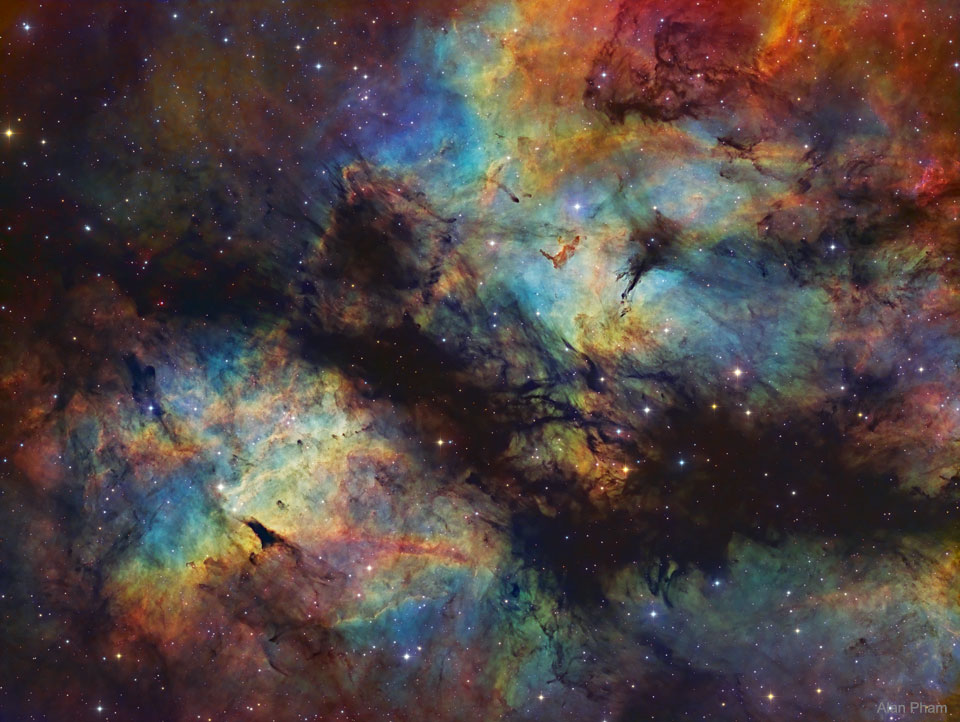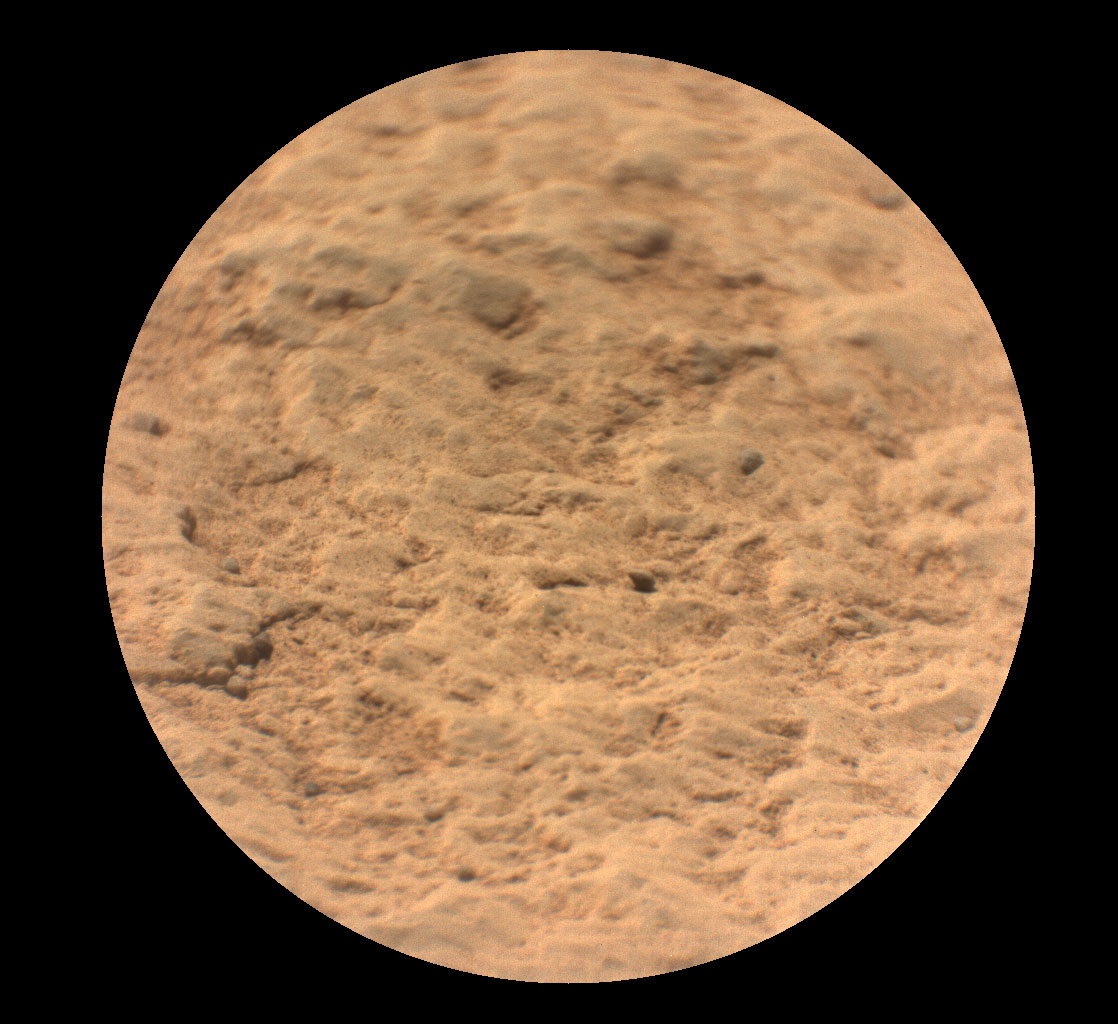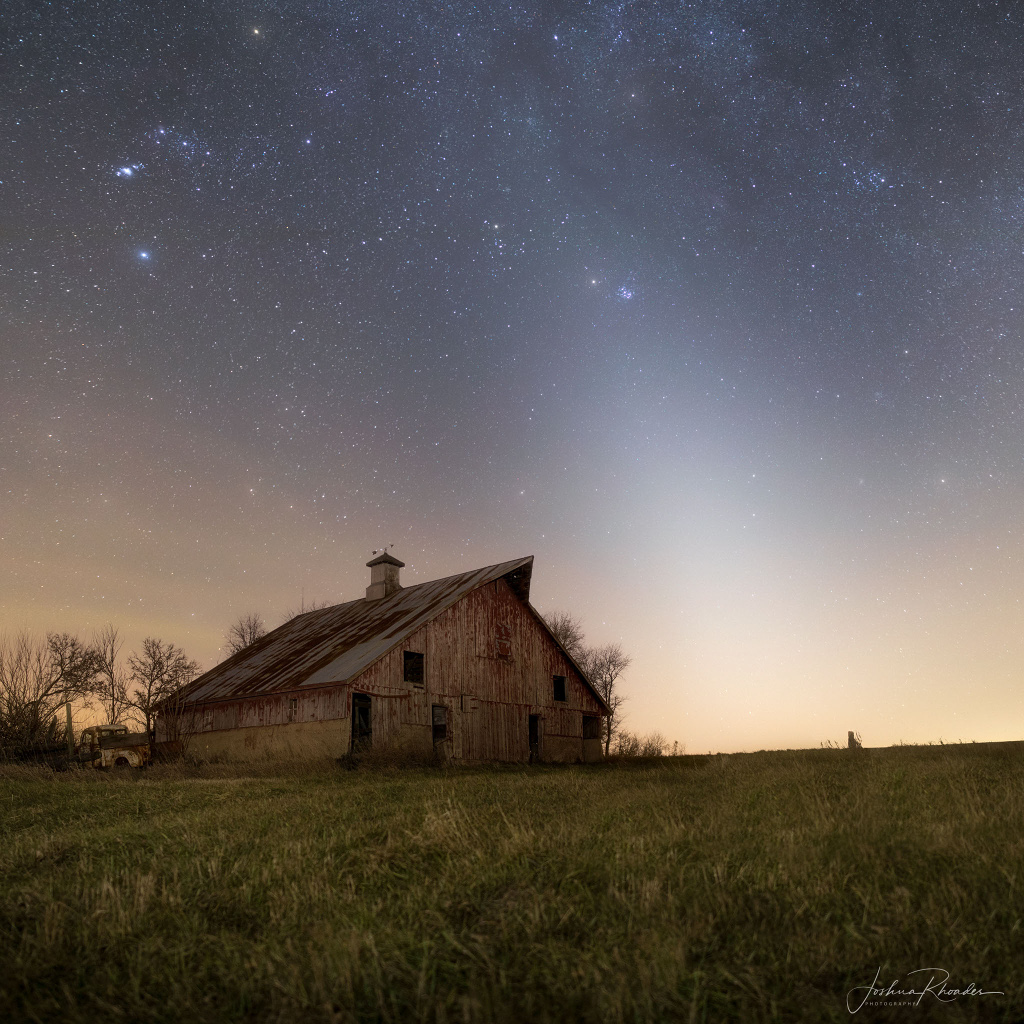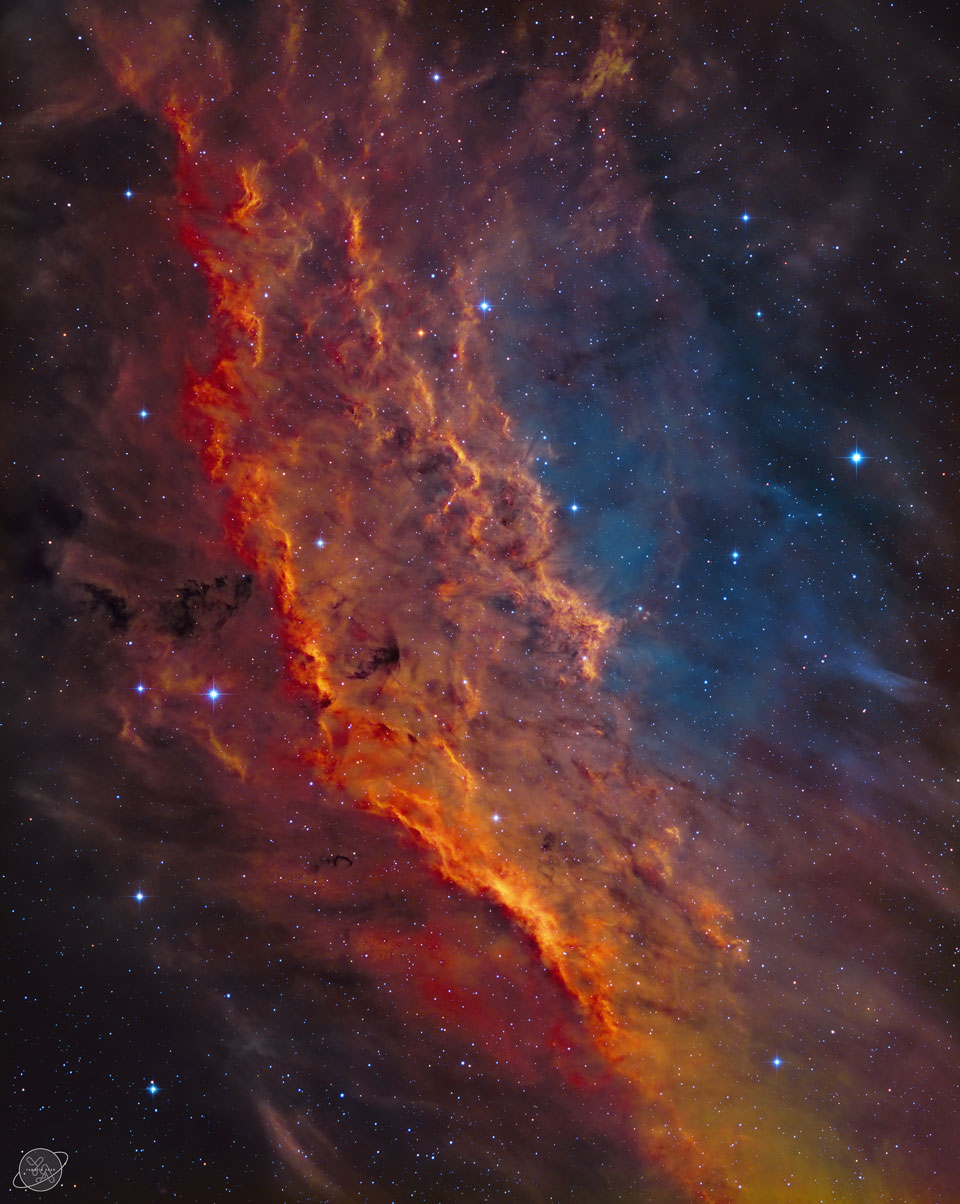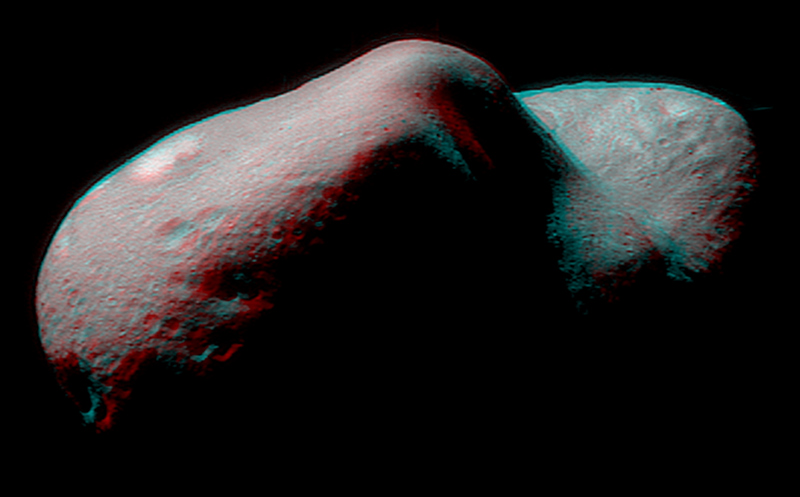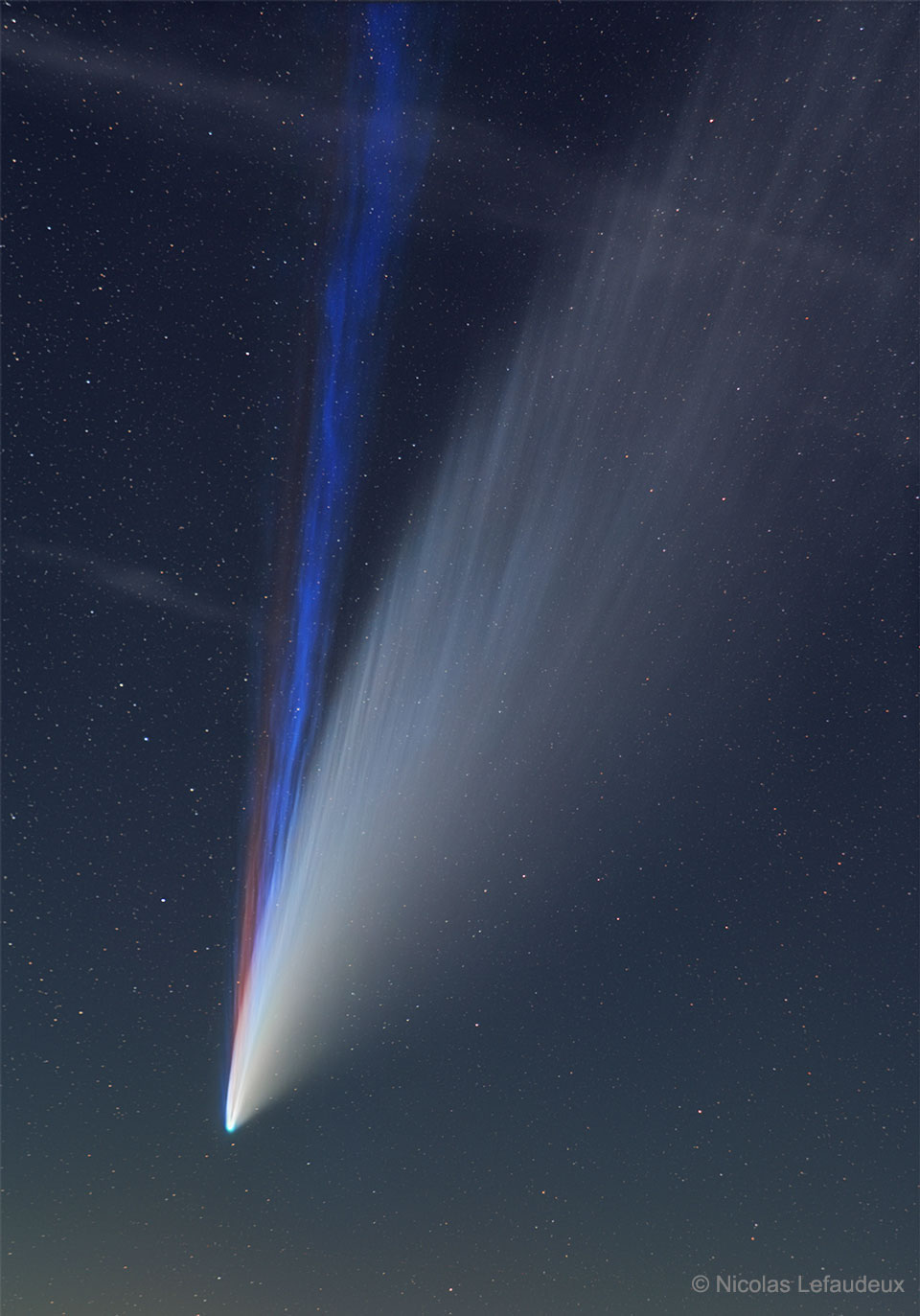Nombre total de pages vues
16/03/2021
ASTRONOMY - IC 1318: The Butterfly Nebula in Gas and Dust
Image Credit & Copyright: Alan Pham
Explanation: In the constellation of the swan near the nebula of the pelican lies the gas cloud of the butterfly next to a star known as the hen. That star, given the proper name Sadr, is just to the right of the featured frame, but the central Butterfly Nebula, designated IC 1318, is shown in high resolution. The intricate patterns in the bright gas and dark dust are caused by complex interactions between interstellar winds, radiation pressures, magnetic fields, and gravity. The featured telescopic view captures IC 1318's characteristic emission from ionized sulfur, hydrogen, and oxygen atoms mapped to the red, green, and blue hues of the popular Hubble Palette. The portion of the Butterfly Nebula pictured spans about 100 light years and lies about 4000 light years away.
13/03/2021
ASTRONOMY - SuperCam Target on Ma'az
2021 March 13
Image Credit: NASA/JPL-Caltech/LANL/CNES/CNRS
Explanation: What's the sound of one laser zapping? There's no need to consult a Zen master to find out, just listen to the first acoustic recording of laser shots on Mars. On Perseverance mission sol 12 (March 2) the SuperCam instrument atop the rover's mast zapped a rock dubbed Ma'az 30 times from a range of about 3.1 meters. Its microphone recorded the soft staccato popping sounds of the rapid series of SuperCam laser zaps. Shockwaves created in the thin martian atmosphere as bits of rock are vaporized by the laser shots make the popping sounds, sounds that offer clues to the physical structure of the target. This SuperCam close-up of the Ma'az target region is 6 centimeters (2.3 inches) across. Ma'az means Mars in the Navajo language.
11/03/2021
ASTRONOMY - Zodiacal Light and Mars
2021 March 11
Image Credit & Copyright: Joshua Rhoades
Explanation: Just after sunset on March 7, a faint band of light still reaches above the western horizon in this serene, rural Illinois, night skyscape. Taken from an old farmstead, the luminous glow is zodiacal light, prominent in the west after sunset during planet Earth's northern hemisphere spring. On that clear evening the band of zodiacal light seems to engulf bright yellowish Mars and the Pleiades star cluster. Their close conjunction is in the starry sky above the old barn's roof. Zodiacal light is sunlight scattered by interplanetary dust particles that lie near the Solar System's ecliptic plane. Of course all the Solar System's planets orbit near the plane of the ecliptic, within the band of zodiacal light. But zodiacal light and Mars may have a deeper connection. A recent analysis of serendipitous detections of interplanetary dust by the Juno spacecraft during its Earth to Jupiter voyage suggest Mars is the likely source of the dust that produces zodiacal light.
10/03/2021
ASTRONOMY - NGC 1499: The California Nebula
2021 March 10
Image Credit & Copyright: Yannick Akar
Explanation: Could Queen Calafia's mythical island exist in space? Perhaps not, but by chance the outline of this molecular space cloud echoes the outline of the state of California, USA. Our Sun has its home within the Milky Way's Orion Arm, only about 1,000 light-years from the California Nebula. Also known as NGC 1499, the classic emission nebula is around 100 light-years long. On the featured image, the most prominent glow of the California Nebula is the red light characteristic of hydrogen atoms recombining with long lost electrons, stripped away (ionized) by energetic starlight. The star most likely providing the energetic starlight that ionizes much of the nebular gas is the bright, hot, bluish Xi Persei just to the right of the nebula. A regular target for astrophotographers, the California Nebula can be spotted with a wide-field telescope under a dark sky toward the constellation of Perseus, not far from the Pleiades.
09/03/2021
ASTRONOMY - Stereo Eros
2021 Mars 09
Image Credit: NEAR Project, JHU APL, NASA
Explanation: Get out your red/blue glasses and float next to asteroid 433 Eros. Orbiting the Sun once every 1.8 years, the near-Earth asteroid is named for the Greek god of love. Still, its shape more closely resembles a lumpy potato than a heart. Eros is a diminutive 40 x 14 x 14 kilometer world of undulating horizons, craters, boulders and valleys. Its unsettling scale and unromantic shape are emphasized in this mosaic of images from the NEAR Shoemaker spacecraft processed to yield a stereo anaglyphic view. Along with dramatic chiaroscuro, NEAR Shoemaker's 3-D imaging provided important measurements of the asteroid's landforms and structures, and clues to the origin of this city-sized chunk of Solar System. The smallest features visible here are about 30 meters across. Beginning on February 14, 2000, historic NEAR Shoemaker spent a year in orbit around Eros, the first spacecraft to orbit an asteroid. Twenty years ago, on February 12 2001, it landed on Eros, the first ever landing on an asteroid's surface. NEAR Shoemaker's final transmission from the surface of Eros was on February 28, 2001.
08/03/2021
ASTRONOMY - Three Tails of Comet NEOWISE
2021 March 8
Image Credit & Copyright: Nicolas Lefaudeux
Explanation: What created the unusual red tail in Comet NEOWISE? Sodium. A spectacular sight back in the summer of 2020, Comet NEOWISE, at times, displayed something more than just a surprisingly striated white dust tail and a pleasingly patchy blue ion tail. Some color sensitive images showed an unusual red tail, and analysis showed much of this third tail's color was emitted by sodium. Gas rich in sodium atoms might have been liberated from Comet NEOWISE's warming nucleus in early July by bright sunlight, electrically charged by ultraviolet sunlight, and then pushed out by the solar wind. The featured image was captured in mid-July from Brittany, France and shows the real colors. Sodium comet tails have been seen before but are rare -- this one disappeared by late July. Comet C/2020 F3 (NEOWISE) has since faded, lost all of its bright tails, and now approaches the orbit of Jupiter as it heads back to the outer Solar System, to return only in about 7,000 years.
07/03/2021
ASTRONOMY - Earth During a Powerful Solar Storm
2025 september 15 Earth During a Powerful Solar Storm Video Credit: NASA 's SVS , SWRC , CCMC , SWMF ; T. Bridgeman et al. Expla...
-
2022 September 26 All the Water on Planet Earth Illustration Credit: Jack Cook, Adam Nieman, Woods Hole Oceanographic Institution ; Data ...
-
2021 August 11 Mammatus Clouds over Saskatchewan Image Credit & Copyright: Michael F Johnston Explanation: When do cloud bottoms appe...

